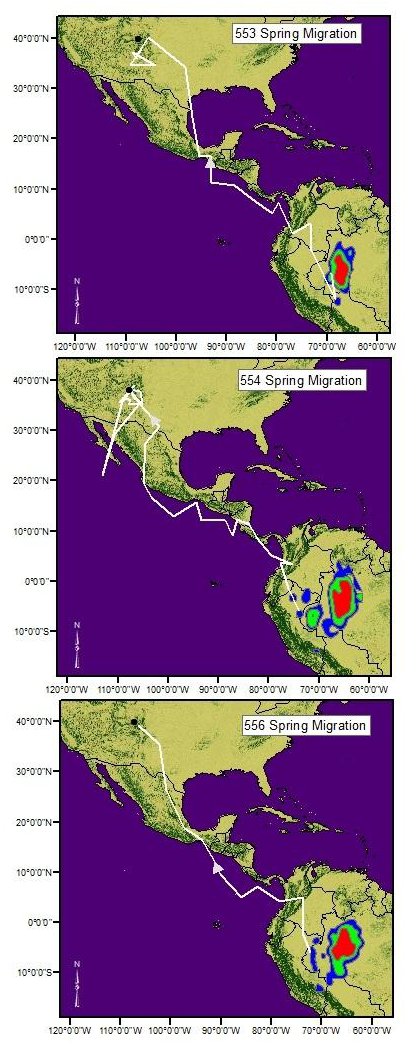Written by Dick
This is an interesting story which could have some implications for colony nest-box design. [Photos by Colin Smale (www.fotolincs.com), click any image to see them at a larger size. ]
 |
The first three doors this end of the cottages
were empty dwellings © Colin Smale |
Back in 1982, Colin Smale was studying a Swift colony in an old house in Lincolnshire. He estimated that some 30 pairs of Swifts nested there, but, as so often happens, the colony has long since been destroyed by roof renovations.
 |
| Eggs in adjacent nests © Colin Smale |
There was a long row of nests, all on one level under the eaves, with little or no barrier between adjacent nests. Colin noticed that the numbers of eggs in the nests fluctuated up and down, as if the birds were moving eggs between nests, though he never actually observed birds carrying eggs.
 |
| Young Swifts in adjacent nests © Colin Smale |
On 13th July 1982, he found that young Swifts were moving from one nest to another, some of which contained an infertile egg, so such nests would appear to not have failed. Also he often saw young Swifts doing push up exercises in preparation for fledging.
 |
| A fledgling Swift exercises © Colin Smale |
The life of colonial Swifts is perhaps more complicated than we thought, and these observations may have implications for the internal design of colony nest-boxes.
In Colin's colony, it seems as though breeding adults could see each other, but the distance between the nests was approximately 2 feet (600mm). Possibly the roof joists are just sufficient to keep them visually separated.
In a colony box, normally the nesting compartments are completely separated from one another, but is this necessarily the best thing to do? Should one separate nesting places by partitions, which stop short of the top of the box? So the birds would not be able to see each other, but any Swift screaming in one box would certainly cause sound to emerge from the entrance of an adjacent box, which could attract birds into that box.
.







